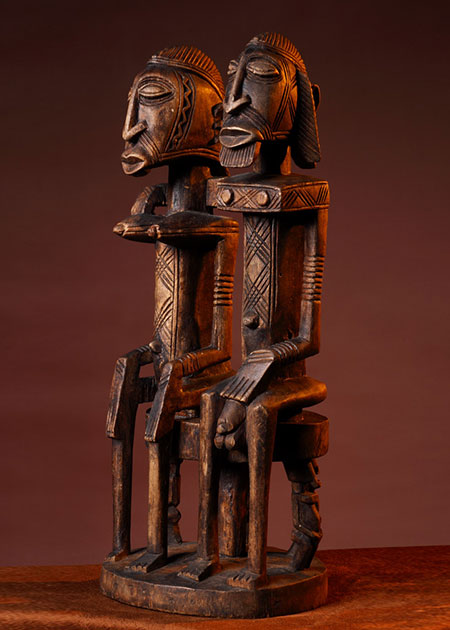It is believed that the Regent Diamond was mined by an enslaved man in the Kollur Mines, on the bank of the Krishna River, in the Golconda Sultanate of India. The man kept it concealed. Following the siege of Golconda, spearheaded by the Mughal Emperor Aurangzeb, who had led his forces to bring down the Qutb Shahi ruler of the region, the formerly enslaved man made his way to the Indian coast to flee the ensuing violence. Once there, he met an English sea captain, offering him half of all the proceeds made on the sale of the diamond in exchange for safe passage out of India. However, as luck would have it for the poor enslaved man, the sea captain betrayed him, eventually selling the diamond to an eminent Indian diamond merchant named Jamchand.
The Regent Diamond was thereafter sold by Jamchand to Thomas Pitt, the British Governor of Fort St. George. This transaction is evidenced by a letter Pitt wrote to his agent in London. He writes, “… This accompanies the model of a Stone (the Diamond) I have lately seen; it weighs Mang. 303 and carrtts 426. It is of excellent crystalline water without any fowles.” Pitt also claimed he had acquired the Diamond for 48,000 pagodas (a unit of currency then used in Fort St. George). He surreptitiously dispatched the Diamond hidden in the heel of his son Robert’s shoe, who was aboard the departing ship, East Indiaman Loyal Cooke, which left for London, from Madras in 1702. It was there that it was later sent for polishing by the diamond cutter Harris, between 1704 and 1706. The high-precision work took two years, costing an eye-watering sum of money.

Away from home, in Europe
Pitt relentlessly attempted to sell the now cushion-cut gemstone to members of the European royalty including Louis IV of France, yet to no avail. Finally, in 1717, French Regent, Philippe II, Duke of Orléans, purchased it at the urging of his close friend, Louis de Rouvroy, duc de Saint-Simon. It was thereafter placed by him under the custody of the French Crown.
Its regal sheen encouraged the French to have the gemstone set into the crown of Louis XV for his coronation and then into a new crown for the coronation of his successor, Louis XVI. It was also used to adorn Louis XVI’s wife, Marie Antoinette.
After the fall of the French monarchy, during the French revolution (1789-1799), the Diamond along with several others from the French Crown’s collection was stolen. Fortunately, it was safely recovered later.
For a brief period during the revolution, it was used to finance military expenses: in 1797-1798 it was pledged to the Berlin entrepreneur Sigmund Otto Joseph von Treskow, and in 1798-1801 to the Dutch banker Vandenberg in Amsterdam. In 1801, the gemstone was permanently redeemed by the then ruler of France, Napoleon Bonaparte.

In 1812, it appeared on Bonaparte’s two-edged sword, which was crafted by Marie-Etienne Nitot. But after Napoleon’s exile from France in 1815, his second wife, Archduchess Marie Louise of Austria, took the Diamond with her. Her father, Austrian Emperor Francis I, later placed it back under the custody of the French Crown. Thereafter, the diamond was set into the crowns of Louis XVIII, Charles X and Napoleon III.
Today, it is part of a collection in the French Royal Treasury at the Louvre Museum. The diamond has been on display there since 1887.

Legend of the Diamond’s curse
Due to a plethora of misfortunes that trailed its itinerary, the Regent Diamond was said to be cursed. The most startling of which happens to be Bonaparte’s rapid downfall after he had it set into his sword.
After the fiery French revolution, an unstable France was in need of an able leader who could give a sense of direction to the country. Napoleon Bonaparte’s charisma endeared him to his countrymen, who openly welcomed his rule despite having ousted another emperor just about a decade ago. He quickly expanded the border of his empire. Bonaparte, a gifted geo-political strategist, rapidly set to work establishing the Confederation of the Rhine, under which he consolidated the largely disintegrated German kingdoms, annexed Holland and Rome, and founded the Grand Duchy of Warsaw in Poland. Soon Napoleon’s empire brought 70 million Europeans under his rule. Consequently, his might created discomfort among other European emperors who feared Bonaparte may attack their empire. This coupled with other of Bonaparte’s costly military mistakes led to France getting embroiled in a high-cost contest, the Battle of Waterloo. It saw Britain, Austria, Prussia and Russia banding together to take on France. In January 1814 France was being attacked on all its frontiers. The anti-French allies announced that they planned to go all out against the rebeling French emperor since in November 1813 he had rejected the peace terms offered by the Austrian foreign minister Klemens, Fürst von Metternich, which would have preserved the natural frontiers of France. After months of grueling conditions, the battle ended in a humiliating defeat for Bonaparte. On June 22, 1815 he was forced to abdicate and sent into exile far from Europe, never to hold power again. Napoleon Bonaparte eventually died a lonely death in the island of Saint Helena on 5th May 1821.




